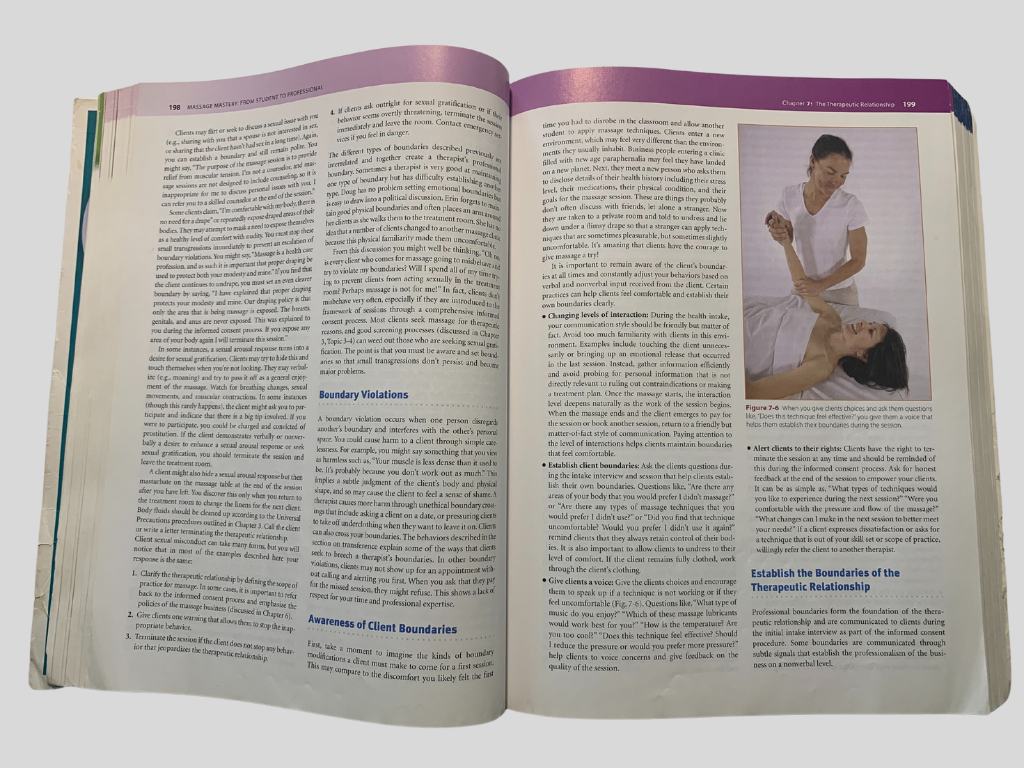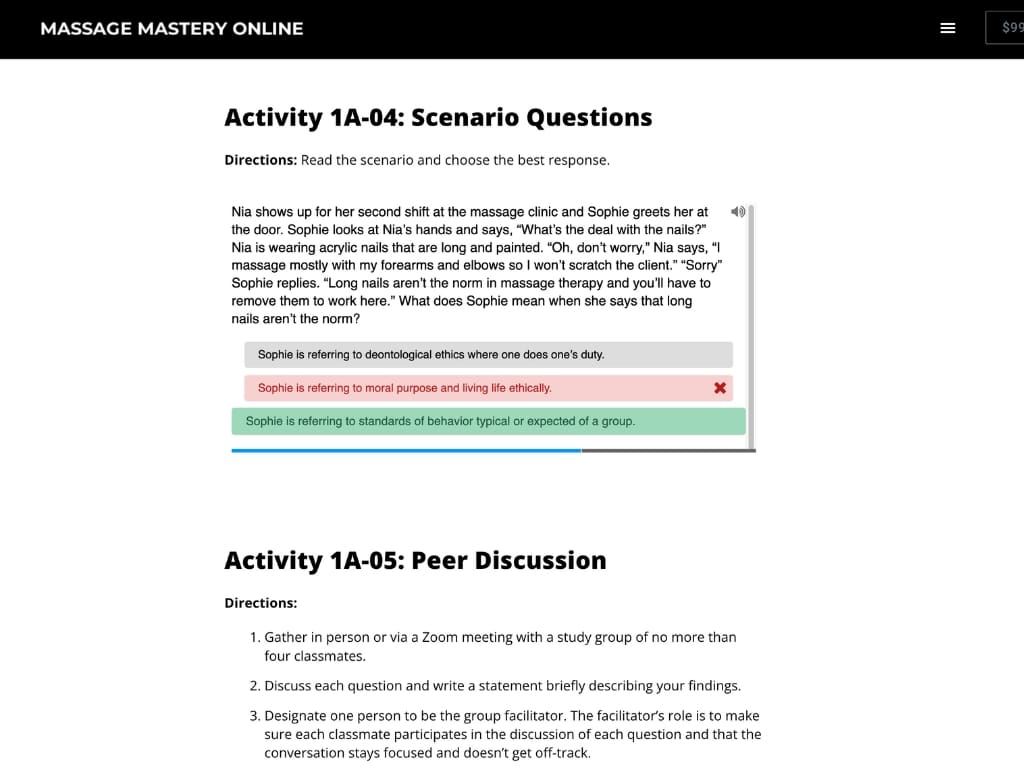Massage Learners with Literacy Challenges
Reading literacy, as defined by the Program for the International Assessment of Adult Competencies (PIAAC), encompasses the ability to understand, evaluate, use, and engage with written texts to participate in society, achieve one’s goals, and develop one’s knowledge and potential. According to PIAAC, approximately 21% of U.S. adults have difficulty completing tasks that require basic literacy skills. While the statistics for adult students in vocation programs like massage therapy are vague, ProLiteracy suggests that about 43% of adults in post-secondary education have literacy challenges.
We created Massage Mastery Online to develop digital textbooks that could leverage web innovations to improve student comprehension. Our unique learning platform and a passion for learning theory and instructional design help us achieve our goal. Here are eight key ways the digital textbooks at Massage Mastery Online are making a difference for adult learners.

Structure, Headings, Font Size, and Visual Aids
As an author of printed textbooks, I can tell you that page count is a primary concern for publishers. Textbook designers pack as much information onto a page as possible to reduce page count and printing costs. As a result, textbooks have few subheadings, no spacing between paragraphs or bullet points, few images, and small font.
In a digital textbook, page count isn’t an issue, and we can use white space, headings, subheadings, and bullet points to increase readability and comprehension. Furthermore, we can pack our texts with plenty of images to draw students deeper into the content. By using the captions of images to convey key points, we ensure “skimmers” get as much from their reading as possible. Additionally, students with visual impairments can use the controls on their computers, phones, and tablets to make the font as large as they want.
Cultural Relevance
Massage textbooks must ensure content is culturally inclusive and relevant to the diverse backgrounds of adult students. Scenarios and practical examples should use names from different ethnicities when depicting clients and therapists. Similarly, images should represent massage stakeholders from varied backgrounds and age groups. Using culturally relevant material increases student engagement and comprehension.

Audio
An ever-growing body of research demonstrates that options to listen to textbooks can improve student engagement, comprehension, and language skills. Scientists believe that our brains create more vivid imagery through listening to speech rather than reading words on a page. Similarly, the cadence and tone of a voice help students attach meaning to words and pick up the correct pronunciation of vocabulary, leading to greater confidence when sharing ideas in class.
In 2023, Eric set out to find the best AI Voice software available and then spent countless hours teaching it how to pronounce massage terminology. He worked for several months to create audio files for every lesson and topic in our comprehensive foundational textbook “Massage Mastery: From Student to Professional.” The textbook has more than 8,000 printed pages, so you can imagine this project’s scope. However, we believe that making audio files of the text available to students will be invaluable for their learning, and from the feedback we’ve received – it is!
Video
Can you imagine high-quality, image-rich videos integrated into textbooks covering every topic in a massage curriculum? We can, and that’s our goal. All of our current textbooks offer some video content. However, we’re working to develop more videos because we know it will enhance student learning.

Writing at the Right Level
Authors can improve the readability of their textbooks by using “chunked” content (content broken into smaller topics), plain, straightforward language, and shorter sentence lengths. Current research suggests that authors developing content for students in their first year of college write at a 10th-grade level. Today, we run all of our text through an AI program that determines its readability to ensure our textbooks match the needs of massage learners.
Terminology
Massage school tasks students with acquiring and using a new language to pass the MBLEx. Good massage textbooks emphasize terminology learning, so at Massage Mastery, we define terms at the beginning of topics and then define them again when we use them for the first time in context. Practices quizzes, learning games, and audio pronunciations support students as they acquire the language of massage therapy.
Interactive Elements and Immediate Feedback
Digital textbooks enhance learning because students can immediately apply what they’ve learned through interactive learning games, self-assessment activities, concept-checking questions, and quizzes that provide instant feedback. Students can identify knowledge gaps and quickly correct misunderstandings by receiving immediate feedback on their work.
Practical Examples
Adults appreciate scenarios, examples, and stories that help them understand how massage concepts function in the real world. We use plenty of scenarios and real-world examples to contextualize massage theory and practice in both the text and learning games.
Instant Text Translation
One of the many benefits of the digital textbooks at Massage Mastery Online is that students with English as a second language can translate the textbook into their native language with a few clicks. While students will want to practice for the MBLEx in English or Spanish, they must not miss core concepts and develop knowledge gaps that impact their overall understanding as classes progress. Students should learn concepts first by reading the text in their native language and then go back and do additional study in English.
In Closing
In closing, we know that many of our massage students struggle with literacy issues. Digital textbooks leverage web innovations to enhance reading comprehension and make acquiring knowledge more efficient, effective, and enjoyable.


